|
Short introduction to FAIR, NUSTAR, DESPEC … Overwiew of instrumentation for decay spectroscopy (DESPEC) Design of the DESPEC gamma -ray spectrometer
Short introduction to FAIR, NUSTAR, DESPEC
In 2004, the FAIR (Facility for Antiproton and Ion Research) project has been approved. It is the first of a number of projects for radioactive beam facilities around the world which has been approved and it will be situated next to the present GSI in Darmstadt, Germany ( homepage of the FAIR project ).
The cen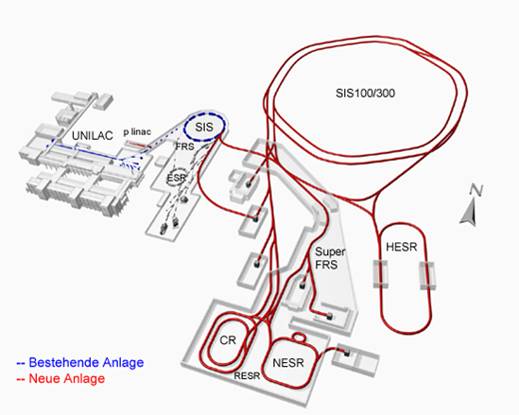 tral part of FAIR is a new synchrotron SIS100/300 which will accelerate all elements up to Uranium up to energies of 35-45 GeV/nucleon with intensities a factor of 100-1000 higher than available today. For the nuclear physics community, organized in the NUSTAR collaboration (Nuclear Structure, Astro-physics and Reactions), the most important part of FAIR besides the synchrotron is a new fragment separator ( Super-FRS ) which will provide secondary radioactive beams of thousands of isotopes between hydrogen and uranium with unprecedented intensities. These radioactive beams can be used at the NUSTAR installacion over a wide range of
energies to perform experiments of many different types. tral part of FAIR is a new synchrotron SIS100/300 which will accelerate all elements up to Uranium up to energies of 35-45 GeV/nucleon with intensities a factor of 100-1000 higher than available today. For the nuclear physics community, organized in the NUSTAR collaboration (Nuclear Structure, Astro-physics and Reactions), the most important part of FAIR besides the synchrotron is a new fragment separator ( Super-FRS ) which will provide secondary radioactive beams of thousands of isotopes between hydrogen and uranium with unprecedented intensities. These radioactive beams can be used at the NUSTAR installacion over a wide range of
energies to perform experiments of many different types.
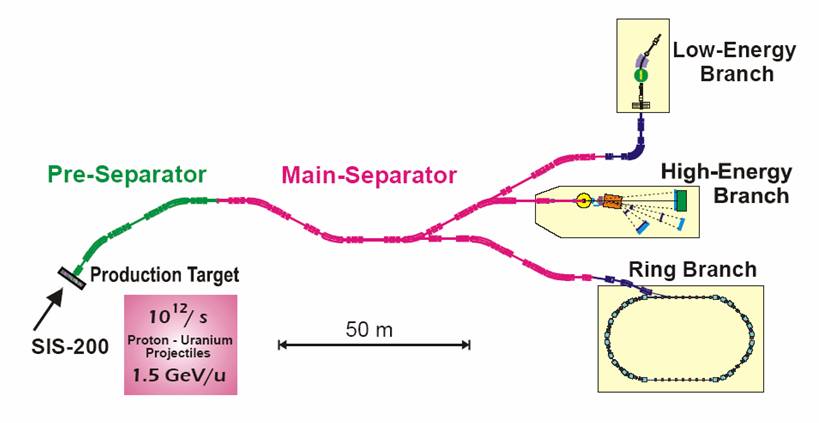
Low-energy branch (some MeV/u up to 100 MeV/u and stopped beams):
- high-resolution in-flight spectroscopy (HISPEC)
- decay spectroscopy of stopped beams (DESPEC)
- traps for highly-charged ions (MATS)
- laser spectroscopy (LASPEC)
- neutron capture measurements (NCAP)
- antiprotonic radioactive nuclei (Exo+pbar)
High-energy branch (relativistic energies):
- kinematical complete measurements of reactions with relativistic radioactive beams (R3B)
Ring branch :
- study of isomeric beams, lifetimes and masses (ILIMA)
- light-ion reactions at the NESR storage ring (EXL)
- electron-ion scattering (ELISe)
- antiproton-ion collider (pbarA)
- spectroscopy of pionic atoms with unstable nuclei (PIONIC)
More detailed information is given in the NUSTAR Letters of Intent .
More detailed information is given in the NUSTAR Letters of Intent .
>>Back
Overwiew of instrumentation for decay spectroscopy (DESPEC)
The basic instrumentation for decay spectroscopy ( a , b , g conversion electrons, p, n …) of
exotic nuclei consists in an active catcher (a highly segmented double sided Silicon strip
detector, DSSSD), a g -ray spectrometer with high resolution and high efficiency and neutron
detectors to study b -delayed neutron emission, a common phenomenon in very neutron-rich
nuclei.
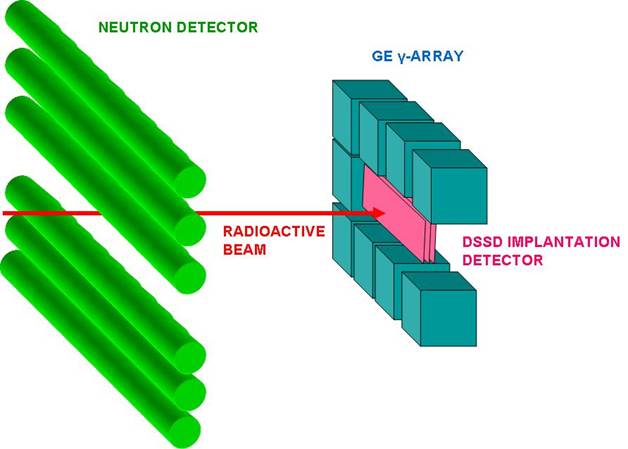
A fast timing array , a total absorption spectrometer and a setup for measuring electromagnetic
moments would complement this basic instrumentation and broaden the range of possible
applications. Within the DESPEC collaboration six different working groups have been established
with the aim to design and built this listed instrumentation for the FAIR project:
| detector system |
working group coordinator
|
| DSSSD implantation and decay detector
|
Phil Woods, Edinburgh, UK
|
| high-resolution g -ray spectrometer
|
Andrea Jungclaus, UAM Madrid, Spain
|
| neutron detectors
|
Daniel Cano-Ott, CIEMAT Madrid, Spain
|
| fast timing array
|
Henryk Mach, Uppsala, Sweden
|
| total absorption spectrometer
|
Leonid Batist, Gatchina, Russia
|
| electromagnetic moments
|
Dimiter Balabanski, Camerino, Italy
|
>>Back
Design of the DESPEC g -ray spectrometer
We propose a highly flexible and modular high-resolution g -ray detection array consisting of 24 stacks of planar double- sided Ge strip detectors. These modules can be arranged in different geometries optimized to the different types of experiments envisaged at DESPEC. The high granularity of the Ge detectors is important in order to assure high efficiency of the array during the "prompt flash" of radiation associated with the implantation of high energy ions into the focal plane catcher and thus to allow the study of decays with very short lifetimes.
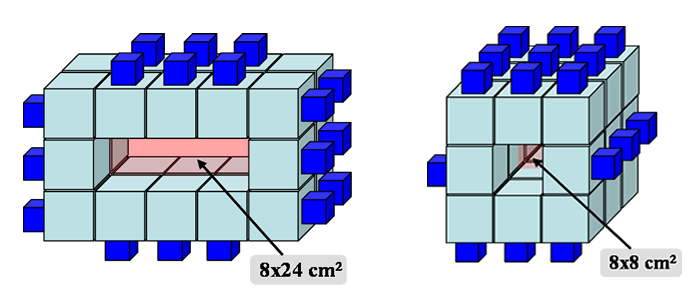
Since the proposed detector type, namely a stack of three planar Ge strip detectors mounted in a common cryostat, has never been realized and tested before we still have to consider the possibility that major technical problems occur during the construction and test of a first
prototype in 2006. We therefore consider in our design studies and Monte Carlo simulations in addition an alternative array geometry based on the use of six or eight segmented Clover detectors (similar to the EXOGAM and TIGRESS modules). The final decision will be taken by the end of 2006 after thorough tests of a prototype stack of planar Ge crystals.
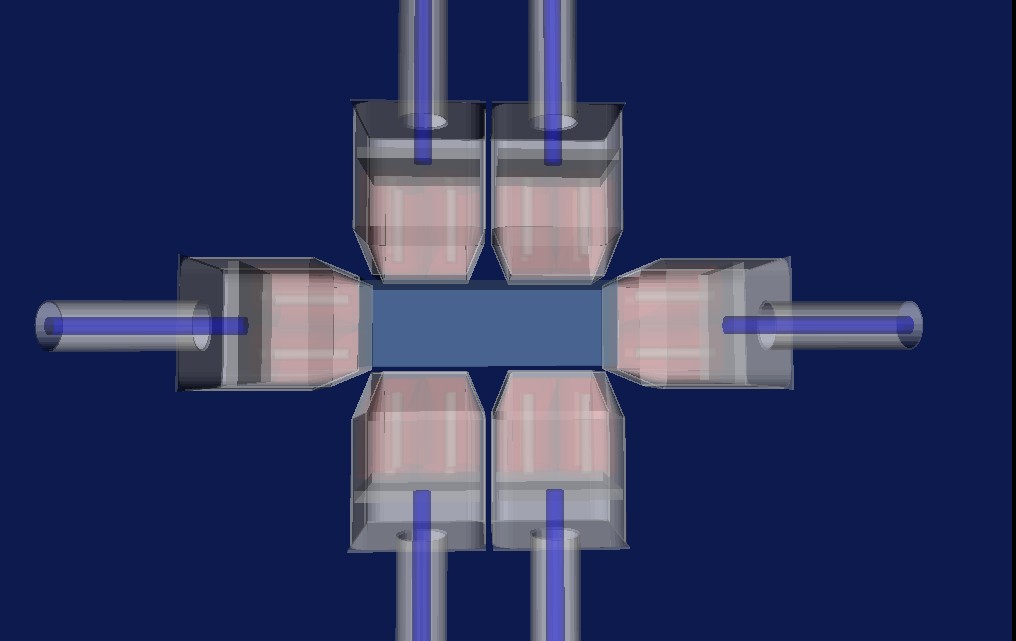
Clover detectors
>>Back |

